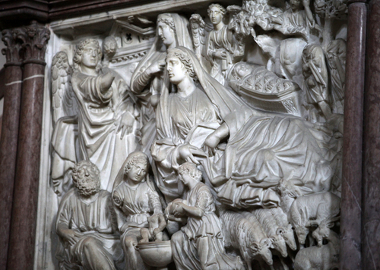The guillotine was a machine created to execute people. The execution took place after the trial and the method used was the decapitation of people sentenced to death, that is, the head was separated from the rest of the body by means of a very sharp blade, through a counterweight.
This invention, called a guillotine, was mentored by the Parisian physician Joseph Guillotin. The guillotine was used for the first time in revolutionary France, in the year 1792, during the French Revolution. The inventor physician defended the right of the condemned to a quick and painless death – according to him, the guillotine provided this type of death.
Before the creation of the guillotine, the main methods used for the execution of people sentenced to death were the gallows (hanging), quartering (slicing up of the principal members of the convict) and the ordeal of the wheel (in which the convict was tied to the outside of a wheel and embers were thrown on him, that is, the person was burned alive). However, with the spread of Enlightenment ideals in the 18th century, discussions about human dignity arose.
Do not stop now... There's more after the advertising ;)
With the rise of these Enlightenment ideals, the 18th century marked the beginning of a long and extensive process that would culminate in a new conception of justice. Thus, in the nineteenth century, justice, more than punishing offenders, would have to re-educate and guide the reinsertion of offenders in society.
Within this logic, prisons became institutions that should guarantee the re-education of people who violated social rules. However, as happens in practice, since their creation, prisons have become inhospitable places of repression and propagators of violence. Currently, prisons are not regenerating offenders – on the contrary, they are reinserting them into the world of crime and marginality.
Leandro Carvalho
Master in History
Would you like to reference this text in a school or academic work? Look:
OAK, Leandro. "Guillotine and Painless Death"; Brazil School. Available in: https://brasilescola.uol.com.br/historiag/guilhotina-morte-sem-dor.htm. Accessed on June 27, 2021.

